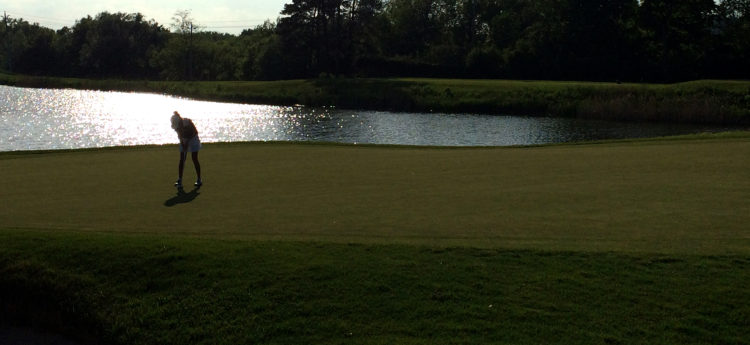In match play, the handicap difference between players is used to determine the number of strokes the high handicap player should receive from the low handicapper. The higher the handicap of a player, the poorer the player is relative to those with lower handicaps. Official handicaps are administered by golf clubs with regional and national golf associations providing additional peer reviewing for low and very low handicaps respectively.
Handicap systems are not used in professional golf. Amateur golfers who are members of golf clubs are generally eligible for official handicaps on payment of the prevailing regional and national association annual fees. Other systems, often free of charge, are available to golfers who are ineligible for official handicaps.
EGA System
The EGA Handicap System is the EGA’s (European Golf Association) method of evaluating golf abilities so that players of different standards can compete in handicap events on equal terms.
An EGA Playing Handicap is the number of Handicap Strokes a player receives for a specific set of Tees at the course being played. The Playing Handicap is expressed as a whole number (0.5 is rounded upwards, -0,5 (“plus” 0.5) rounds upwards to 0 (scratch) and -1.5 (“plus” 1.5) to -1 (“plus” 1).

Note 1: If a player’s Playing Handicap is negative (a so-called “Plus” Playing Handicap) he gives Handicap Strokes to the course, commencing at stroke index 18.
Note 2: The Playing Handicap is considered to be the “Handicap” referred to in Rule 6-2 of the Rules of Golf.
The EGA Playing Handicap Formula converts EGA Exact Handicaps into EGA Playing Handicaps:
Playing Handicap = Exact Handicap x (Slope Rating / 113) + (Course Rating – Par) Under the EGA system, final scores might be amended using the Competition Stableford Adjustment method
5 Ways to Lower Your Handicap
Go To the Range
And keep going to the range. It’s not enough to play as many rounds as you can. Hitting balls at the range helps to groove a repetitive swing (hopefully, not a bad one) and will keep the number of “I haven’t played this poorly in years!” rounds down. So go to the range early and often.
Practice Your Short Game Too
When was the last time you practiced your short game? You know, really practiced beyond just rolling a few putts before teeing off on No. 1? This year, pick a putting drill and commit to practicing it before or after every round for 15 minutes. And really work on those four-footers. Columbia professor Mark Broadie writes that a 90-golfer makes 84 percent of his/her three-footers (a scratch golfer makes 93 percent), but just 65% from four feet, while a scratch golfer converts 80 percent. Those putts just outside the gimme range can add up quickly.
Check Your Equipment
Do you play a driver that Ben Hogan used to endorse? Are the grooves on your wedges so worn down you can’t see them anymore? Do your grips disintegrate in your hands? Then it’s time for an upgrade. Oh, and while you’re at it, get fitted for clubs. Regardless of your skill level, having equipment that fits your body and swing can make a huge difference. In our 2013 case study, eight out of nine players (ranging from single digit handicappers to guys that shoot in the 90s) gained 1.7 strokes after getting fit. Off the tee, the average yardage gain was 21 yards.
Play Different Courses
We’re not saying to abandon your home course, but branching out when given the opportunity will help your golf game. Golf is about making adjustments so playing the same course over and over can lead to a golfer getting too comfortable and usually skew a player’s handicap down since the familiarity with a course makes shooting lower scores easier. Yes, the goal is to lower your handicap, but you also don’t want it to be inaccurate. Challenge yourself by playing different tracks that feature faster greens or more hazards and you’ll improve your all-around skills. Plus, you’ll make your rounds feel fresher.

Play In Less-Than-Ideal Conditions
After an especially brutal winter, many courses won’t be in top shape for a while. That doesn’t mean you shouldn’t play on temp tees and greens, though. Practice is practice, and the sooner you get outside walking and swinging, the sooner you’ll find your “mid-season” form. And don’t be afraid to play in the rain/cold/heat/etc., either. It will make those times you find yourself stuck playing in bad weather (hey, it happens) a lot more bearable and make you a lot more likely to avoid carding bad scores that will inflate your handicap.












